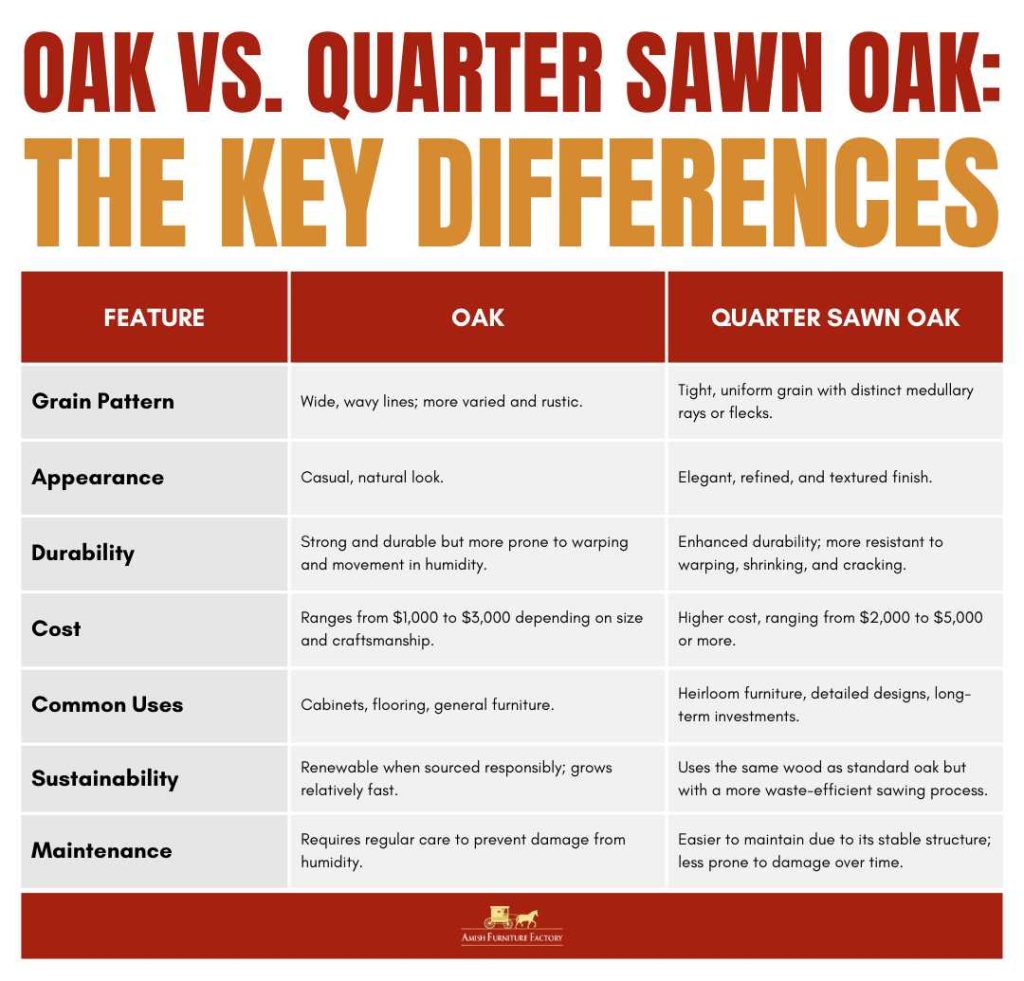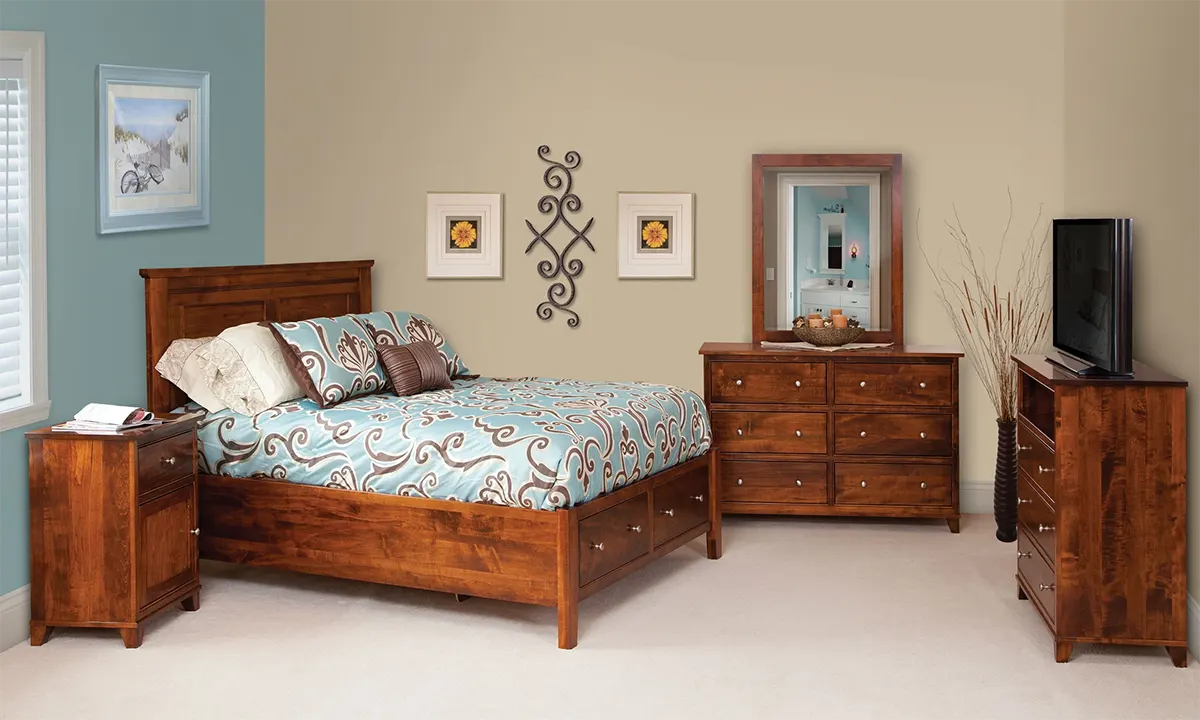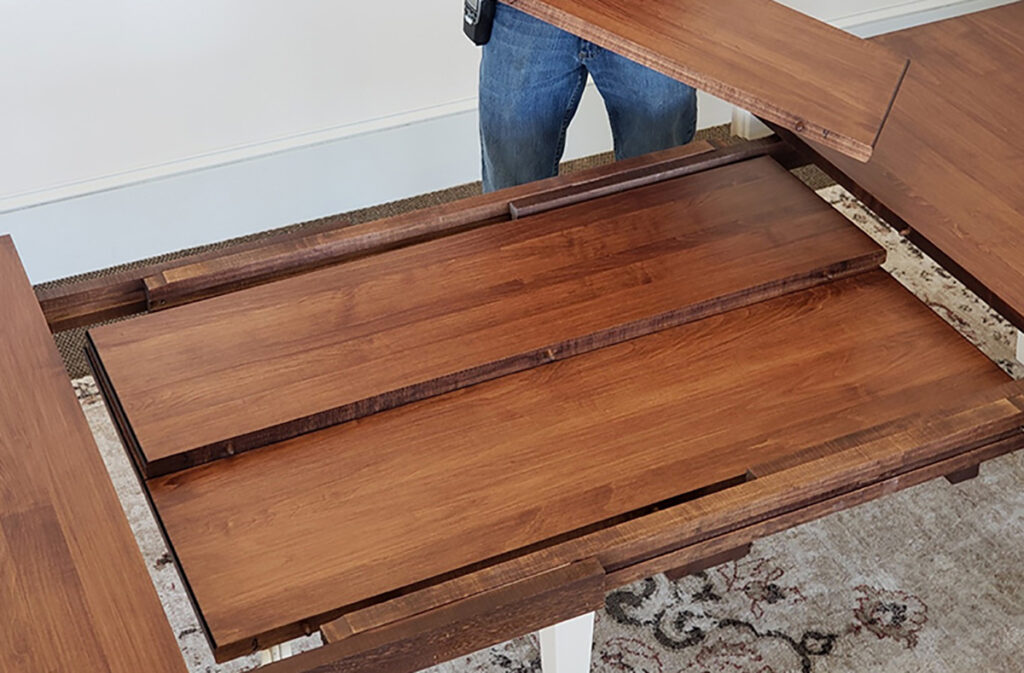
When choosing furniture, the type of wood you select can make a big difference in both appearance and durability. Oak has long been a favorite for its classic look and strength, but quarter sawn oak takes things a step further with its unique grain patterns and enhanced stability.
Key Takeaways
- Standard oak has a wavy grain for a rustic look, while quarter sawn oak features a uniform grain with distinctive flecks for an elegant appearance.
- Standard oak is durable and affordable but can warp in humidity, whereas quarter sawn oak is more stable and expensive due to its specialized cutting process.
- Standard oak suits everyday furniture and is sustainably sourced, while quarter sawn oak is ideal for high-end pieces and is also sustainably sourced but costs more.
This guide breaks down everything you need to know about standard oak and quarter sawn oak, from their grain patterns to their best uses.
What Is Oak?

Oak, sourced from the oak tree, is a popular hardwood celebrated for its strength, beauty, and versatility. It’s commonly used in solid wood furniture and comes in different types, each with its own unique characteristics.
Oak wood is primarily available in two types: red oak and white oak. Red oak has a light to medium reddish color, while white oak has a more neutral, light brown shade. Both types of oak are commonly used in furniture, flooring, cabinets, and even barrels for wine and whiskey aging.
One of oak’s standout features is its distinct grain pattern, which ranges from linear grain patterns to wavy and open designs, adding texture and appeal. This hardwood is also known for its durability, making it resistant to dents and scratches. Its natural strength allows it to withstand heavy use over many years, making it a reliable choice for furniture makers.
What Is Quarter Sawn Oak?

Quarter sawn oak is different from regular oak, primarily due to the sawing technique used. In quarter sawing, the log is cut into quarters before being milled, which results in a unique grain pattern and improved stability compared to flat-sawn oak. This method produces boards with a straighter, more uniform grain and distinctive ray fleck patterns that are often highly sought after in fine furniture and cabinetry.
One of the standout features of quarter sawn oak is its striking grain pattern. The medullary rays, which appear as light-colored, ribbon-like streaks, give the wood a unique and eye-catching look. Along with its visual appeal, quarter sawn oak is also more durable than standard oak. Its tight grain structure provides extra strength, making it more resistant to warping, twisting, or cracking over time.
Oak vs Quarter Sawn Oak: Key Differences
When comparing oak and quarter sawn oak, their differences go beyond appearance. Each type has unique characteristics that affect their grain patterns, durability, cost, and environmental impact.
Grain Patterns and Appearance
Standard oak has a wide, wavy grain that gives it a casual, rustic look. Quarter sawn oak, on the other hand, has a tighter, more uniform grain with unique “medullary rays,” giving it a smoother, refined appearance.
Durability and Strength
Both types are strong, but quarter sawn oak is more durable. Its tighter grain makes it more resistant to warping and cracking, especially in varying conditions, making it ideal for long-lasting furniture.
Cost Comparison: Oak vs Quarter Sawn Oak
Quarter sawn oak is typically more expensive than standard oak, with the price difference reflecting the additional labor and material loss involved in the cutting process. On average, standard oak furniture can cost between $1,000 to $3,000, depending on the size and craftsmanship.
In comparison, quarter sawn oak pieces usually start around $2,000 and can go up to $5,000 or more. This higher cost is due to the specialized quarter sawing method, which takes more time and yields less usable wood from each log.
Sustainability and Environmental Impact
Both types can be sustainably sourced. Quarter sawn oak produces less wood waste but has a higher carbon footprint due to the extra labor involved. Eco-conscious buyers should look for oak products certified by organizations like the Forest Stewardship Council (FSC).

Discover the unique beauty and durability of oak and quarter sawn oak furniture. Visit Amish Furniture Factory today to explore handcrafted, sustainable pieces that match your style.
When to Choose Oak or Quarter Sawn Oak?
Choosing between standard oak and quarter sawn oak depends on the specific needs of your space, style preferences, and budget. Here’s how each type can be best utilized.

Best Uses for Standard Oak
Standard oak is a versatile choice for many types of furniture, including cabinets, flooring, and general household pieces. Its classic grain patterns add a timeless look that suits both traditional and modern styles. Easy to stain or paint, standard oak can be customized to match any decor. Additionally, its affordability makes it perfect for larger projects like dining tables and bed frames. If you want sturdy, attractive furniture at a good price, standard oak is an excellent option.
Ideal Applications for Quarter Sawn Oak
Quarter sawn oak is perfect for heirloom-quality, solid wood furniture that’s designed to last generations. Its refined grain, featuring distinctive medullary rays, adds a striking look to detailed designs like mission-style furniture and custom oak cabinets. Compared to plain sawn lumber, quarter sawn oak offers superior strength and resistance to warping and moisture penetration, making it ideal for long-term investments such as dining tables, dressers, and kitchen design projects. For standout pieces that showcase intricate carving and craftsmanship, quarter sawn oak provides exceptional value and durability.
How to Care for Oak and Quarter Sawn Oak Furniture
Proper care is essential to maintain the beauty and longevity of both standard and quarter sawn oak furniture. While they share some care practices, quarter sawn oak has a few extra considerations.

Maintenance Tips for Standard Oak
To keep your oak furniture looking its best, dust it regularly using a soft, dry cloth to prevent buildup. For cleaning, use a slightly damp cloth with mild soap and water, but make sure to wipe it dry immediately to avoid water damage. It’s also important to keep oak furniture away from direct sunlight and heat sources, as these can cause fading and warping over time.
Applying a furniture wax or polish once or twice a year can help protect the wood and enhance its natural grain. Use coasters and placemats to prevent scratches and stains, especially on tables and other frequently used surfaces.
Caring for Quarter Sawn Oak Furniture
Quarter sawn oak is more resistant to warping, but it still requires care to preserve its beauty. Dust regularly with a soft cloth, and clean using a gentle, non-abrasive cleaner made specifically for wood. Avoid using harsh chemicals or water-based cleaners, as they can damage the finish over time. Since quarter sawn oak often has a more intricate grain pattern, consider using a soft-bristled brush to clean crevices and carvings. For added protection, apply a high-quality furniture oil or wax to keep the wood hydrated and enhance its rich, natural luster.
Making the Final Choice
Both oak and quarter sawn oak offer timeless appeal and durability, making them great options for furniture. When choosing between the two, consider where the furniture will be used, your budget, and the level of craftsmanship you desire. Your wood of choice should meet both your needs and preferences.
FAQs
Is Quarter Sawn Oak Harder to Find Than Standard Oak?
Yes, quarter sawn oak is generally harder to find because of its specialized cutting process. Fewer sawmills produce it, which contributes to its higher price and rarity compared to standard oak. However, many quality furniture makers, like Amish Furniture Factory, offer quarter sawn oak pieces.
Can Quarter Sawn Oak Furniture Be Refinished or Restored?
Absolutely, quarter sawn oak furniture can be refinished or restored just like standard oak. Its tight grain structure makes it an excellent candidate for sanding and re-staining, allowing you to refresh its look. However, it’s best to consult a professional to maintain its intricate grain patterns.
How Does Quarter Sawn Oak Compare to Other Premium Woods Like Walnut or Cherry?
Quarter sawn oak wood offers unique grain patterns with its medullary rays, while walnut and cherry have smoother, more uniform grains. In terms of durability, quarter sawn oak is more resistant to warping and moisture changes than walnut or cherry. While all three woods are premium options, quarter sawn oak stands out for its distinctive appearance and long-lasting strength.
What’s the Best Finish to Use on Quarter Sawn Oak Furniture?
A clear, oil-based finish is often the best choice for quarter sawn oak furniture. It enhances the natural grain patterns, especially the medullary rays, while providing a durable protective layer. Polyurethane or varnish finishes are also good options if you want added protection against moisture and scratches.
